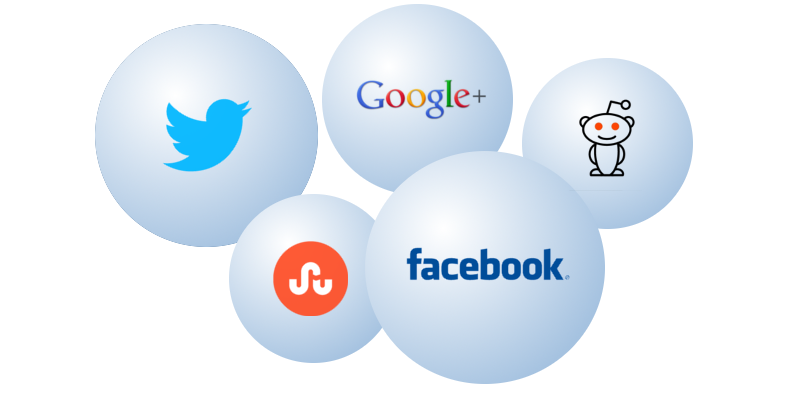Where do you get your news?
Now think about where your parents – or grandparents – got theirs. The answers are likely very different. My parents watched the local TV evening news, followed by a national broadcast. Each morning, my dad brought in the Charleston Post & Courier from our driveway. The Sunday morning edition was a particular treat, calling for at least an hour of reading and a cup of coffee. Today, I continue that one part of the tradition my parents set – although for me, the Sunday New York Times is the paper of choice, which in turn calls for significantly more coffee.
Among my friends and co-workers, even the reading of a Sunday newspaper – made of paper – makes me a bit of an anomaly. With the explosion of digital mediums and channels, along with the increasing time we all spend on social networks and in front of a screen (laptop, tablet or smartphone), where, how and from what source we get our news has undergone a tectonic shift.
On the surface, this should be a great thing. We have the world at our fingertips. The availability of news and information should be making us more informed. But is it? The flip side of this wealth of information includes digital overload, leading many to curb the influx of information by narrowing our sources. Facebook friends, RSS feeds and even our own Google searches can limit our exposure to news and views unlike our own. And in this era of extreme content customization, efforts to manage the clutter may be preventing your audience from hearing your story.
In our latest white paper, we take a look at the “Paradox of Personalization,” (.pdf) how these factors can play into the reach and impact of information reaching the public, and the implications for the PR and marketing efforts of companies and organizations.
Take a look, and let us know: do you feel better informed because of the instant access to news and information, or is personalization limiting your exposure to messages you might otherwise have heard?

 As design director at Cookerly, Tim serves as the creative lead in the development of branding campaigns, print collateral and digital media for clients across a broad range of industries, including consumer, professional services, healthcare and technology.
As design director at Cookerly, Tim serves as the creative lead in the development of branding campaigns, print collateral and digital media for clients across a broad range of industries, including consumer, professional services, healthcare and technology. As a senior vice president at Cookerly, Mike Rieman is a strategic communications leader specializing in media relations and reputation management. With a proven track record of securing high-profile placements in top-tier outlets such as The New York Times, The Wall Street Journal, CNN and USA Today, he excels at crafting compelling narratives that resonate across print, broadcast and digital platforms.
As a senior vice president at Cookerly, Mike Rieman is a strategic communications leader specializing in media relations and reputation management. With a proven track record of securing high-profile placements in top-tier outlets such as The New York Times, The Wall Street Journal, CNN and USA Today, he excels at crafting compelling narratives that resonate across print, broadcast and digital platforms. Mike Touhill is vice president at Cookerly Public Relations, where he helps lead traditional, social and digital media programs for B2B and B2C clients in packaging, telecommunications and technology, among other industries. As a communication leader, he develops and executes public relations strategy, provides proactive and reactive counsel to C-level executives and secures earned media coverage for client initiatives and product.
Mike Touhill is vice president at Cookerly Public Relations, where he helps lead traditional, social and digital media programs for B2B and B2C clients in packaging, telecommunications and technology, among other industries. As a communication leader, he develops and executes public relations strategy, provides proactive and reactive counsel to C-level executives and secures earned media coverage for client initiatives and product. Andrew Agan is a vice president at Cookerly Public Relations, overseeing the agency’s internship program and leading media relations, content strategy and social media initiatives. He provides counsel and executes campaigns for clients across various sectors, including finance, healthcare, hospitality, technology, automotive and many others. Andrew excels at crafting compelling stories and building media relationships, resulting in clients being featured in notable outlets such as CNBC, Associated Press, Business Insider, Fox Business, HBO, Inc. Magazine, Sirius XM, The Wall Street Journal and USA Today, among others.
Andrew Agan is a vice president at Cookerly Public Relations, overseeing the agency’s internship program and leading media relations, content strategy and social media initiatives. He provides counsel and executes campaigns for clients across various sectors, including finance, healthcare, hospitality, technology, automotive and many others. Andrew excels at crafting compelling stories and building media relationships, resulting in clients being featured in notable outlets such as CNBC, Associated Press, Business Insider, Fox Business, HBO, Inc. Magazine, Sirius XM, The Wall Street Journal and USA Today, among others.


 As vice president of Cookerly, Sheryl Sellaway uses her extensive corporate communications background to lead consumer PR efforts, deliver strategy for marketing programs and share expertise about community initiatives.
As vice president of Cookerly, Sheryl Sellaway uses her extensive corporate communications background to lead consumer PR efforts, deliver strategy for marketing programs and share expertise about community initiatives.
Hi! I just stumbled over your paper, as I was tracing my own PhD dissertation “The paradox of personalisation : Public service broadcasters’ approaches to media personalisation technologies”.
Thanks,
Jannick Sørensen
http://nordicom.statsbiblioteket.dk/ncom/en/publications/the-paradox-of-personalisation%28e0d6ae05-2a6d-453e-8a1b-72df8cf21457%29.html